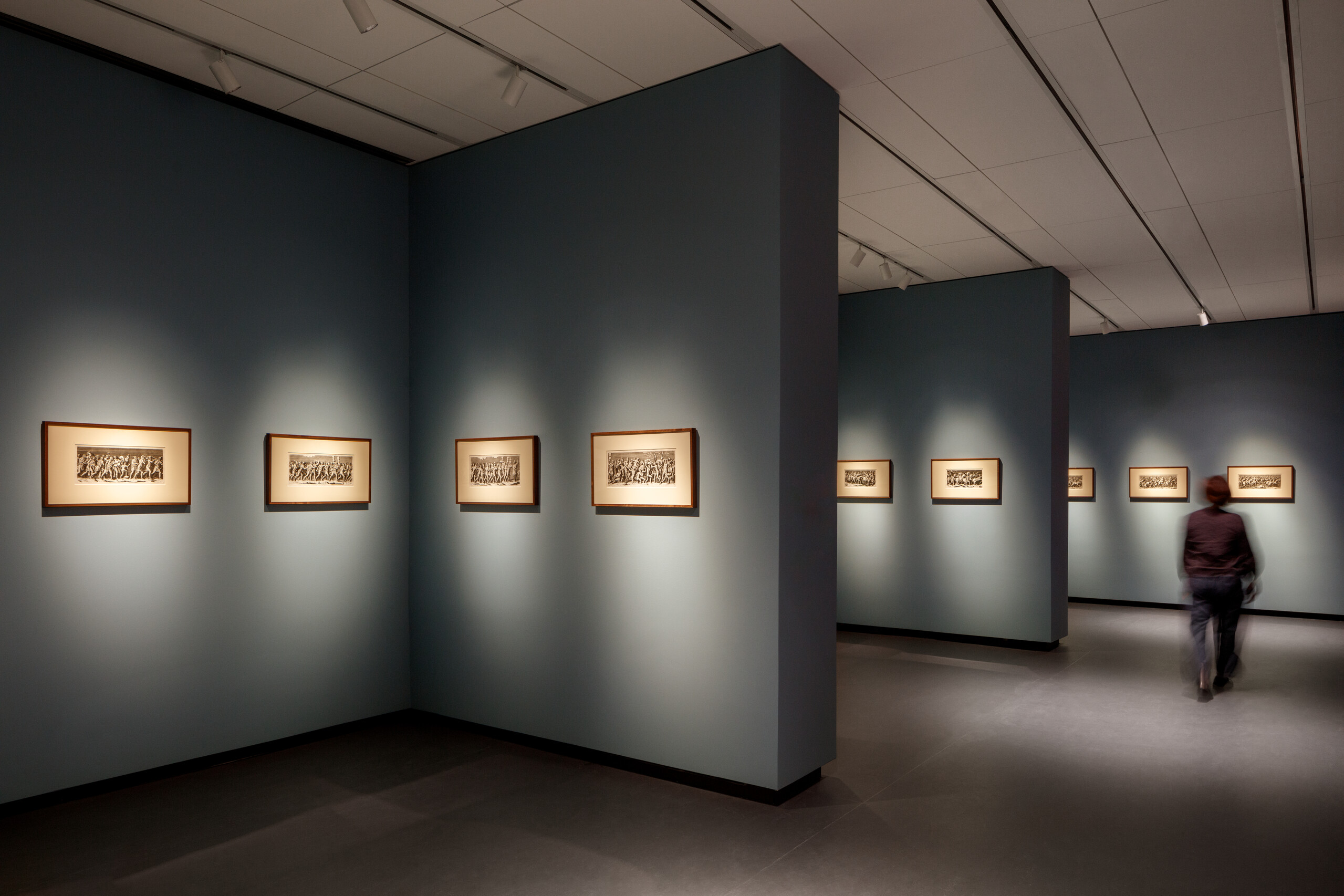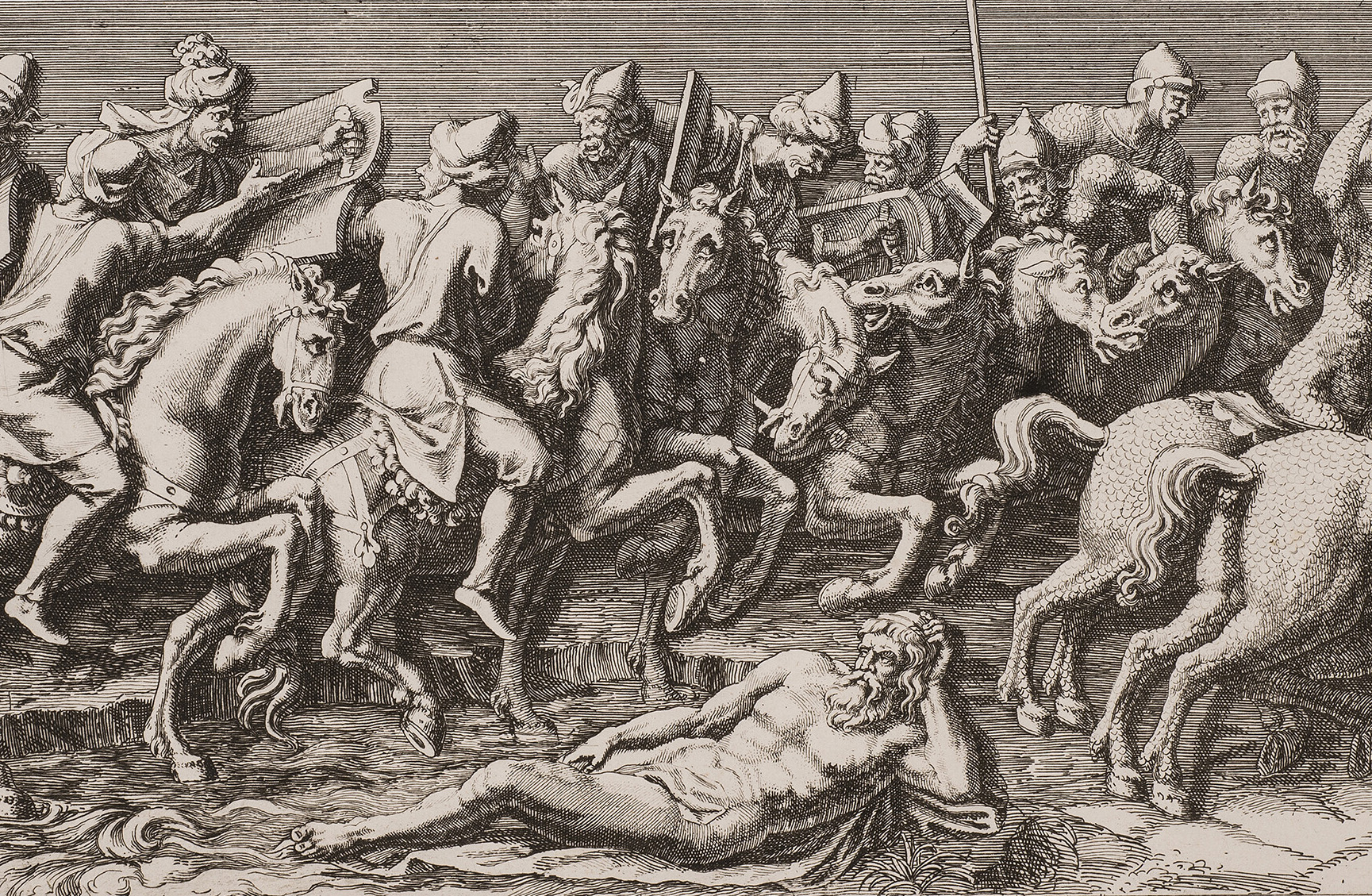Researching historical women artists is often fraught. Archival documentation may be sparse or even nonexistent, but records about artists’ relatives or associates can yield insights or clues. This is the case with Antoinette Bouzonnet-Stella (1641–1676), the 17th-century French artist who executed the print series The Entrance of the Emperor Sigismond into Mantua (L’Entrée de L’Empereur Sigismond a Mantoue, 1675), now on view in NMWA’s redesigned fourth-floor galleries through October 20. While art historians today know little about the details of Bouzonnet-Stella’s life, glimpses of her existence and work are visible in research on her family members.

Life at the Louvre
Bouzonnet-Stella’s uncle Jacques Stella (1596–1657) was an artist from Lyon, France, who studied painting in Rome. Upon his return to France, he was granted lodging and studio space in the Louvre, which at that time was a royal palace with space dedicated to housing and studios for prestigious artists. There, Stella continued his painting career until the deaths of his major patrons, Cardinal Richelieu (1585–1642) and King Louis XIII (1601–1643); he then established a printing workshop in the Louvre. In 1654, Stella moved to larger apartments in the palace, presumably to accommodate this new enterprise and the additional workers it required. For these workers, Stella turned to his sister’s children: Claudine, Antoinette, Françoise, and their brother, Antoine. He gave the siblings a robust artistic education, focusing on print design and printmaking.
Just three years after the Bouzonnet-Stella siblings arrived, their uncle died, but the workshop was apparently already so successful that Claudine, only 21, became its head. Jointly with her brother Antoine, she was named as the heir of Stella’s apartments in the Louvre. For Claudine, this inheritance came with a condition: if she ever wished to marry, she would have to obtain the king’s permission. She never married, indicating that such a change could have jeopardized her claim to the apartments and possibly the workshop as well.
In this environment, Antoinette Bouzonnet-Stella lived and worked with her siblings. As head of the family workshop after their uncle’s death, Claudine was granted a special privilege that allowed her to publish prints of Jacques Stella’s designs. The sisters also took on individual commissions for work, such as Bouzonnet-Stella’s series. Executed just one year before her tragically early death at about age 35, The Entrance of the Emperor Sigismond into Mantua reproduces a Renaissance stucco frieze at the Palazzo del Te in Mantua, Italy. Bouzonnet-Stella was commissioned to create this series by Jean-Baptiste Colbert, advisor to King Louis XIV and “Vice-protecteur” of the Royal Academy of Painting and Sculpture.

Colbert hoped to foster a national art embodying the ideals of ancient Greek and Roman iconography: political strength, military prowess, and intellectual refinement. Prints were an ideal format to circulate this new artistic style throughout France. The first print of the series bears the inscription, “This frieze was made in stucco under the guidance and on the designs of Giulio Romano at the Palazzo del Te in Mantua, engraved by Anthoinette [sic] B. Stella.” Just below this inscription is the note, “In Paris at the galleries of the Louvre with the king’s privilege.”
Many questions remain about this series. How would the prints have been displayed? And why was the edition in the museum’s collection not published until 1787, more than 100 years after its creation by Bouzonnet-Stella? It was published by François Etienne Joubert, who presumably acquired the plates from Jacques-François Chéreau, who sold his collection of prints and plates to Joubert in 1787. Upon her death in 1697, Claudine willed the plates and prints that she and her sisters created to a cousin, Michel de Masso. How the plates, Bouzonnet-Stella’s Entrance of the Emperor Sigismond into Mantua presumably among them, later ended up with Chéreau is not entirely clear.
Impressed?
With much unknown, Bouzonnet-Stella’s mastery of skill and technique are nonetheless evident in this extraordinary print series. The clarity of line, articulation of anatomy—both human and equine—and gradations of shade all testify to this artist’s abilities, which are as clear today as they must have been in the seventeenth century.
